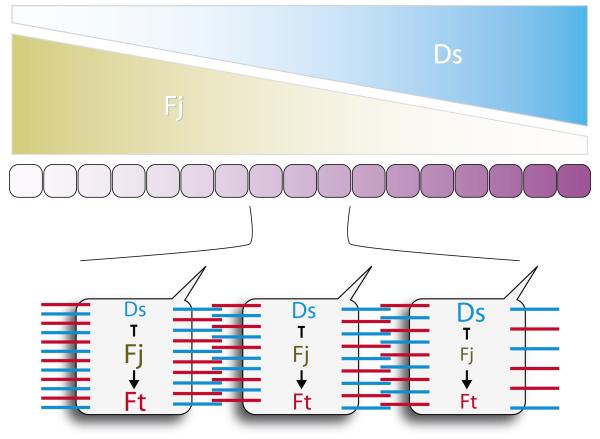Figure 2.
A sketch of the Ds/Ft model. There is evidence that the Ds and Fj gradients are set up by the primary morphogens; they make a Ds/Ft gradient that is responsible for both PCP7, 8 and for the activation of Hippo targets that drive growth15-18. In the model, Ds and Fj concentration gradients span the organ and interact with uniformly expressed Ft molecules to build together, in one axis, a linear gradient of Ds/Ft heterodimers. Putative distributions of Ds and Ft heterodimers are indicated below. In the model, Ds and Ft function as trans-heterodimers acting, in effect, as ligands and receptors for each other. This model explains, for example, why ds− or ft− cells do not show PCP or growth responses — ds− or ft− cells could not compare numbers of Ds/Ft heterodimers on their two faces.

